| | | Mathison Museum of Natural History |  |
|
+11Kikimalou bmathison1972 Taos widukind Jill Duck-Anch-Amun lucky luke Caracal rogerpgvg Roger Bloodrayne 15 posters | |
| Author | Message |
|---|
widukind
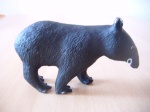
Country/State : Germany
Age : 48
Joined : 2010-12-30
Posts : 44548
 |  Subject: Re: Mathison Museum of Natural History Subject: Re: Mathison Museum of Natural History  Fri Dec 15, 2023 4:56 pm Fri Dec 15, 2023 4:56 pm | |
| |
|   | | bmathison1972
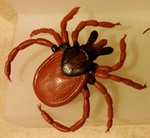
Country/State : Salt Lake City, UT
Age : 52
Joined : 2010-04-13
Posts : 6317
 |  Subject: Re: Mathison Museum of Natural History Subject: Re: Mathison Museum of Natural History  Sat Dec 16, 2023 2:06 pm Sat Dec 16, 2023 2:06 pm | |
| Species: Chelonoidis niger (Quoy & Gaimard, 1824) Common name(s): Galápagos giant tortoise About the Figure: Manufacturer: Schleich Series: Wild Life America Year of Production: 2020 Size/Scale: Carapace length approximately 6.0 cm for a scale of 1:10.2-1:25, depending on subspecies Frequency of species in toy/figure form (at time of posting): Common Miscellaneous Notes: Discussions on the forums have led to different ideas about which subspecies of Galápagos tortoise this figure represents. One common idea is that it represents the western Santa Cruz tortoise, C. n. porteri. In my opinion, a subspecies determination cannot be made for this figure and I am databasing it simply as a Galápagos tortoise. I also have the CollectA ‘Lonesome George’ figure that was modeled after the last surviving member of the now-extinct Pinta Island tortoise ( C. n. abingdonii), and that figure will be reviewed at a later date. About the Animal: Geographic distribution: Galápagos Islands Habitat: Varies based on subspecies; some subspecies occur on moist, forested slopes while others occur in arid and semi-arid lowlands Diet: Vegetation; the specific diet varies based on the habitat of the subspecies and can include grasses, forbs, leaves, fruit, lichens, and cacti IUCN Status (at time of posting): Varies based on subspecies, but most are Vulnerable, Endangered, or Critically Endangered [the IUCN gives the different populations full species rank] Miscellaneous Notes: There are 15 described subspecies (or species, depending on the classification used) of extant or recently extinct Galápagos tortoises. The subspecies and the islands on which they occur include: C. n. abingdonii (Abingdon; extinct), C. n. becki (Isabella), C. n. chathamensis (Chatham), C. n. darwini (Santiago), C. n. donfaustoi (Santa Cruz), C. n. duncanensis (Duncan), C. n. guentheri (Isabela), C. n. hoodensis (Española), C. n. microphyes (Isabela), C. n. niger (Floreana; extinct), C. n. phantasticus (Fernandina), C. n. porteri (Santa Cruz), C. n. vandenburghi (Isabela), C. n. vicina (Isabela), and the disputed C. n. wallacei (Rábida). There is also an extinct population documented from Santa Fe Island, known as Chelonoidis ‘Santa Fe Island lineage’, but it has yet to be formally described. [You must be registered and logged in to see this image.] |
|   | | Roger
Admin
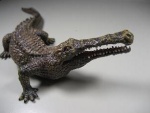
Country/State : Portugal
Age : 49
Joined : 2010-08-20
Posts : 35094
 |  Subject: Re: Mathison Museum of Natural History Subject: Re: Mathison Museum of Natural History  Sat Dec 16, 2023 10:08 pm Sat Dec 16, 2023 10:08 pm | |
| I wished these Galapagos tortoise figures were possible to identify up to the species/subspecies level. There are many good ones and it could be a good excuse to get all of them. I don't have this Schleich but it is a beautiful model. |
|   | | bmathison1972

Country/State : Salt Lake City, UT
Age : 52
Joined : 2010-04-13
Posts : 6317
 |  Subject: Re: Mathison Museum of Natural History Subject: Re: Mathison Museum of Natural History  Sun Dec 17, 2023 1:07 pm Sun Dec 17, 2023 1:07 pm | |
| Species: Maratus volans (Pickard-Cambridge, 1874) Common name(s): flying peacock spider About the Figure: Manufacturer: Bandai Series: Diversity of Life on Earth - Peacock Spiders Year of Production: 2021 Size/Scale: Body length of both sexes approximately 8.0 cm for a scale of 16:1 Frequency of species in toy/figure form (at time of posting): Unique (as a pair) Miscellaneous Notes: Being figures from Bandai's Diversity of Life on Earth line, these peacock spiders are large, require assembly, and the final product is articulated. The male's abdomen can be displayed in both courtship mode (as shown here) and in a neutral pose. With the exception of the abdomen, the female model uses the same body and legs as the male, which is technically not correct, as the 'flag' (see below), should only be present on the male. Also, the pedipalps are too large for a female. About the Animal: Geographic distribution: Eastern Australia Habitat: Open forest; usually among leaf litter and dead twigs Diet: Insects and other spiders IUCN Status (at time of posting): Not Evaluated Miscellaneous Notes: Maratus volans, like other peacock spiders, is known for the elaborate display of the male to attract a female. While males use the brightly colored opisthosomal flaps on their abdomen to initially get the female's attention, much of the ritual consists of the male waving and vibrating his 'flags' (tufts of setae on the third pair of legs) for anywhere from four to 50 minutes. If he is successful, they mate. If the female is not interested, however, she might consume the male! [You must be registered and logged in to see this image.] |
|   | | widukind

Country/State : Germany
Age : 48
Joined : 2010-12-30
Posts : 44548
 |  Subject: Re: Mathison Museum of Natural History Subject: Re: Mathison Museum of Natural History  Mon Dec 18, 2023 7:42 am Mon Dec 18, 2023 7:42 am | |
| |
|   | | bmathison1972

Country/State : Salt Lake City, UT
Age : 52
Joined : 2010-04-13
Posts : 6317
 |  Subject: Re: Mathison Museum of Natural History Subject: Re: Mathison Museum of Natural History  Mon Dec 18, 2023 1:54 pm Mon Dec 18, 2023 1:54 pm | |
| Species: Potamotrygon leopoldi Castex & Castello, 1970 Common name(s): Xingu River ray; white-blotched river stingray; polka-dot stingray About the Figure: Manufacturer: Kaiyodo Series: Capsule Q Museum - Toxic and Dangerous Animals Vol. 2 Year of Production: 2021 Size/Scale: Disc approximately 4.5 cm wide for a scale of 1:6.7-1:8.9 (see below) Frequency of species in toy/figure form (at time of posting): Very rare Miscellaneous Notes: This figure was unique for about two years, until Bandai released one in late 2023 (less than a couple months ago, as of the time of this writing). The scale above is calculated based on a disk width of 30-40 cm, per FishBase, which is the standard I generally use for calculating scales in fish species. However, in reading peer-reviewed journal articles, I have seen disk dimensions as wide as 72 cm, which would bring the scale to 1:16. About the Animal: Geographic distribution: Brazil (Xingu River basin) Habitat: Freshwater rivers, especially slow-moving clear waters with rocky bottoms Diet: Fish, benthic invertebrates IUCN Status (at time of posting): Vulnerable Miscellaneous Notes: Potamotrygon leopoldi is endemic to the Xingu River basin in Brazil and is currently only known from the Xingu, Curuá, and Iriri Rivers. Like other 'stingrays', P. leopoldi possesses toxins in the dentine spine in its tail. The chemical composition of these toxins is still not completely understood, but the toxins can produce nociceptive (pain-causing), edematic (edema-causing), and necrotic effects. Interestingly, the toxicity decreases as the animal matures, probably due to a decrease in predator pressure. The composition of the toxins do not change, however, suggesting the reduction in toxicity in a mature specimen might be caused by quantitative shifts, only. [You must be registered and logged in to see this image.] |
|   | | widukind

Country/State : Germany
Age : 48
Joined : 2010-12-30
Posts : 44548
 |  Subject: Re: Mathison Museum of Natural History Subject: Re: Mathison Museum of Natural History  Mon Dec 18, 2023 7:57 pm Mon Dec 18, 2023 7:57 pm | |
| |
|   | | bmathison1972

Country/State : Salt Lake City, UT
Age : 52
Joined : 2010-04-13
Posts : 6317
 |  Subject: Re: Mathison Museum of Natural History Subject: Re: Mathison Museum of Natural History  Tue Dec 19, 2023 12:40 pm Tue Dec 19, 2023 12:40 pm | |
| Species: Pristimantis mutabilis Guayasamin et al., 2015 Common name(s): mutable rainfrog; 'punk rock' rainfrog About the Figure: Manufacturer: Yowie Group Series: Animals With Super Powers Year of Production: 2021 Size/Scale: Leaf base 5.4 cm long. Snout-to-vent length approximately 3.0 cm for a scale of 1.8:1 for a male or 1.4:1-1.3:1 for a female Frequency of species in toy/figure form (at time of posting): Unique Miscellaneous Notes: The sex of the frog cannot be determined and since the only real marker for sexual dimorphism is size, calculations for both are included above. About the Animal: Geographic distribution: Ecuador (Ecuadorian Andes) Habitat: Cloud forests; arboreal Diet: Small insects and spiders IUCN Status (at time of posting): Endangered Miscellaneous Notes: Pristimantis mutabilis has the ability to change its skin texture, from smooth to tuberculate and back again. It is believed it changes texture based on the substrate it is sitting on for the purpose of camouflage. For example, when tuberculate, its texture and color help it blend in with mosses and lichens. [You must be registered and logged in to see this image.] |
|   | | Roger
Admin

Country/State : Portugal
Age : 49
Joined : 2010-08-20
Posts : 35094
 |  Subject: Re: Mathison Museum of Natural History Subject: Re: Mathison Museum of Natural History  Tue Dec 19, 2023 12:48 pm Tue Dec 19, 2023 12:48 pm | |
| The subject of this Yowie series is more or less what I've ever expected from the Incredible Creatures by Safari. I find the ability of this frog absolutely fantastic so it is a great choice for this subject. I got one recently as a gift from Paige and contrarirly to what is usual with me, I liked a lot the leaf base. Often I find bases quite a distracting element but this one serves perfectly the desired effect and works as a bonus. |
|   | | widukind

Country/State : Germany
Age : 48
Joined : 2010-12-30
Posts : 44548
 |  Subject: Re: Mathison Museum of Natural History Subject: Re: Mathison Museum of Natural History  Tue Dec 19, 2023 6:33 pm Tue Dec 19, 2023 6:33 pm | |
| |
|   | | bmathison1972

Country/State : Salt Lake City, UT
Age : 52
Joined : 2010-04-13
Posts : 6317
 |  Subject: Re: Mathison Museum of Natural History Subject: Re: Mathison Museum of Natural History  Wed Dec 20, 2023 12:43 pm Wed Dec 20, 2023 12:43 pm | |
| Species: Caedicia simplex Walker, 1869 Common name(s): common green katydid; Australian common garden katydid About the Figure: Manufacturer: Cadbury Series: Yowies Series 3 Year of Production: 1999 Size/Scale: Body length (including wings but excluding legs and antennae) approximately 4.3 cm, within scale 1:1 Frequency of species in toy/figure form (at time of posting): Unique Miscellaneous Notes: Being one of the original Australian Yowies, some assembly is required. About the Animal: Geographic distribution: Eastern Australia and New Zealand Habitat: Forests, parks, gardens; usually on shrubby vegetation Diet: Vegetation; including leaves, pollen, and flowers from a wide range of native and introduced plants IUCN Status (at time of posting): Not Evaluated Miscellaneous Notes: Like many other katydids, C. simplex is a master of disguise and is morphologically adapted to look like a leaf, providing camouflage against would-be predators. [You must be registered and logged in to see this image.] |
|   | | widukind

Country/State : Germany
Age : 48
Joined : 2010-12-30
Posts : 44548
 |  Subject: Re: Mathison Museum of Natural History Subject: Re: Mathison Museum of Natural History  Wed Dec 20, 2023 7:35 pm Wed Dec 20, 2023 7:35 pm | |
| |
|   | | bmathison1972

Country/State : Salt Lake City, UT
Age : 52
Joined : 2010-04-13
Posts : 6317
 |  Subject: Re: Mathison Museum of Natural History Subject: Re: Mathison Museum of Natural History  Thu Dec 21, 2023 12:43 pm Thu Dec 21, 2023 12:43 pm | |
| Species: Aptenodytes patagonicus Miller, 1778 Common name(s): king penguin About the Figure: Manufacturer: Colorata Series: Penguins of the World Year of Production: 2017 (2003) Size/Scale: Height approximately 7.5 cm for a scale of 1:11.3-1:13.3 Frequency of species in toy/figure form (at time of posting): Uncommon Miscellaneous Notes: My figure is the 2017 version of a model that was originally produced in 2003. From what I can tell, among modern, major Western companies, this species has only been produced by Schleich. About the Animal: Geographic distribution: Sub-Antarctic islands, especially Crozet, Falkland, Heard, Kerguelen, Macquarie, Prince Edward, South Georgia and South Sandwich, with some non-breeding residence in southern Chile and Argentina; occasional vagrant to South Africa, Brazil, New Zealand, and mainland Antarctica Habitat: Sparsely-vegetated islands, away from pack ice Diet: Fish, marine invertebrates IUCN Status (at time of posting): Least Concern Miscellaneous Notes: Even though A. patagonicus is a large bird that breeds on remote sub-Antarctic islands, it is not entirely safe from predation by other animals! On land, eggs and chicks are at risk for predation by giant petrels and skuas, and in the ocean adults and fledglings are hunted by leopard seals, fur seals, and killer whales! [You must be registered and logged in to see this image.] |
|   | | Roger
Admin

Country/State : Portugal
Age : 49
Joined : 2010-08-20
Posts : 35094
 |  Subject: Re: Mathison Museum of Natural History Subject: Re: Mathison Museum of Natural History  Thu Dec 21, 2023 12:55 pm Thu Dec 21, 2023 12:55 pm | |
| The Colorata set is still the best option for a species collector. I was incredibly lucky of receiving it as a gift from Christophe. Colorata king penguin is a very good model and there isn't anything ambiguous on it. We can tell easily the differences between the king and the emperor of the same set. On the other hand, many figures marketed as penguins use to be quite ambiguous, including the old Schleich king penguin. The newer Schleich version, from 2010 is a good model but in 2011 it was repainted with emperor colors in one of the weirdest confusions of Schleich.Now we also have the ToyMany model which has a chick and that's the most unexpected penguin release I've ever witnessed. |
|   | | widukind

Country/State : Germany
Age : 48
Joined : 2010-12-30
Posts : 44548
 |  Subject: Re: Mathison Museum of Natural History Subject: Re: Mathison Museum of Natural History  Thu Dec 21, 2023 6:32 pm Thu Dec 21, 2023 6:32 pm | |
| |
|   | | bmathison1972

Country/State : Salt Lake City, UT
Age : 52
Joined : 2010-04-13
Posts : 6317
 |  Subject: Re: Mathison Museum of Natural History Subject: Re: Mathison Museum of Natural History  Fri Dec 22, 2023 1:45 pm Fri Dec 22, 2023 1:45 pm | |
| Species: Protaetia cuprea (Fabricius, 1775) Common name(s): copper chafer; rose chafer About the Figure: Manufacturer: Papo Series: Garden Animals Year of Production: 2023 Size/Scale: Body length approximately 3.4 cm for a scale of 2.1-1.5:1 Frequency of species in toy/figure form (at time of posting): Unique Miscellaneous Notes: Papo marketed this figure as a 'European rose chafer' which would often imply Cetonia auratua. However, based on color (including the lack of white maculae), smooth texture of elytra and pronotum, and shape of scutellum, I felt P. cuprea was a better fit. About the Animal: Geographic distribution: Eurasia Habitat: Forest edges, fruit tree orchards, steppes, grassland, meadows, gardens Diet: Larvae are detrivores in ant nests, woody debris, and deciduous leaf litter. Adults feed on pollen and nectar in the spring and early summer then switch to ripe fruit in the later summer and fall; they are also readily attracted to sap flows IUCN Status (at time of posting): Not Evaluated Miscellaneous Notes: The life cycle of Protaetia cuprea varies based on climate, region, and food availability. Larvae overwinter and most of the time, the beetle has a one-year life cycle. Rarely, the life cycle may be completed within a year when adults emerge the same year the eggs were laid by the parental generation. Larvae are detrivores and are commonly found in both active and abandoned ant nests, but may also be found in deciduous leaf litter (especially of Quercus – oaks) and compost heaps. Adults emerge in the spring and primarily feed on pollen and nectar of woody and herbaceous plants but they readily feed on sap flows. Later in the summer and into the fall, the adults switch their diet to fruit. Because pollen is more rich in proteins and lipids than carbohydrates, and fruit is more rich in carbohydrates, the beetles are able to fly farther when on a fruit-based diet. This is due to their increased aerobic performance when fueled by carbohydrate rich content. [You must be registered and logged in to see this image.] |
|   | | lucky luke
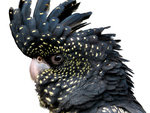
Country/State : FRANCE Saint-Louis
Age : 62
Joined : 2010-07-17
Posts : 6048
 |  Subject: Re: Mathison Museum of Natural History Subject: Re: Mathison Museum of Natural History  Fri Dec 22, 2023 4:24 pm Fri Dec 22, 2023 4:24 pm | |
| |
|   | | Caracal
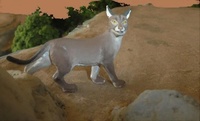
Country/State : France
Age : 65
Joined : 2018-10-24
Posts : 6978
 | |   | | Kikimalou
Admin
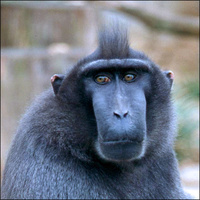
Country/State : Lille, FRANCE
Age : 59
Joined : 2010-04-01
Posts : 20264
 |  Subject: Re: Mathison Museum of Natural History Subject: Re: Mathison Museum of Natural History  Sat Dec 23, 2023 9:55 am Sat Dec 23, 2023 9:55 am | |
| It is wonderful model  |
|   | | bmathison1972

Country/State : Salt Lake City, UT
Age : 52
Joined : 2010-04-13
Posts : 6317
 |  Subject: Re: Mathison Museum of Natural History Subject: Re: Mathison Museum of Natural History  Sat Dec 23, 2023 1:18 pm Sat Dec 23, 2023 1:18 pm | |
| Species: Pygoscelis antarcticus (Forster, 1781) Common name(s): chinstrap penguin About the Figure: Manufacturer: Colorata Series: Penguins of the World Year of Production: 2017 (2003) Size/Scale: Height approximately 5.8 cm for a scale of 1:12.5 Frequency of species in toy/figure form (at time of posting): Uncommon to rare Miscellaneous Notes: This figure has a very interesting pedigree. It was first, to the best of my knowledge, produced by Colorata in 2003. In 2006, it was used by Safari Ltd. for their Wild Safari Sealife line. There must have been a formal sharing agreement with the company that designed or produced the original sculpt, as it's unlike Safari to 'bootleg' another company's work. My figure is from a 2017 reissue of the Colorata set. About the Animal: Geographic distribution: Circumpolar in the Antarctic, breeding on coastal Antarctica, Bouvet Island (Chile), French Southern Territories, South Georgia, South Shetland Islands, South Orkney Islands, and South Sandwich Islands, wintering as far north as Argentina; occasional vagrant to South Africa and New Zealand Habitat: Icebergs and ice sheets; breeding on rocky coasts, rocky slopes, cliff edges Diet: Small fish, crustaceans, cephalopods IUCN Status (at time of posting): Least Concern Miscellaneous Notes: During the breeding season, Pygoscelis antarcticus builds round nests of stones that are on average 40 cm in diameter and 15 cm tall. A female usually lays two eggs which are incubated by both parents, usually in shifts of 5-10 days. Eggs hatch after 33-35 days and chicks will stay in the nest for 20-30 days before joining crèches (groups of young penguins huddling together for warmth and protection). After molting, at roughly 50-60 days old, the chicks are able to go to the sea. [You must be registered and logged in to see this image.] |
|   | | Caracal

Country/State : France
Age : 65
Joined : 2018-10-24
Posts : 6978
 | |   | | Duck-Anch-Amun
Country/State : Luxembourg
Age : 34
Joined : 2010-12-29
Posts : 1043
 |  Subject: Re: Mathison Museum of Natural History Subject: Re: Mathison Museum of Natural History  Sat Dec 23, 2023 2:06 pm Sat Dec 23, 2023 2:06 pm | |
| Love the colorata penguins!
The colorata King penguin convinced me to add it to my searchlist, as I find that the colorata models shown the best difference between king an emperor penguins :) Hopefully, I will find the model in near future :) |
|   | | bmathison1972

Country/State : Salt Lake City, UT
Age : 52
Joined : 2010-04-13
Posts : 6317
 |  Subject: Re: Mathison Museum of Natural History Subject: Re: Mathison Museum of Natural History  Sat Dec 23, 2023 2:11 pm Sat Dec 23, 2023 2:11 pm | |
| - Duck-Anch-Amun wrote:
- Love the colorata penguins!
The colorata King penguin convinced me to add it to my searchlist, as I find that the colorata models shown the best difference between king an emperor penguins :) Hopefully, I will find the model in near future :) Good luck. It's hard to find Colorata figures individually, even on eBay! |
|   | | Roger
Admin

Country/State : Portugal
Age : 49
Joined : 2010-08-20
Posts : 35094
 |  Subject: Re: Mathison Museum of Natural History Subject: Re: Mathison Museum of Natural History  Sat Dec 23, 2023 3:38 pm Sat Dec 23, 2023 3:38 pm | |
| Episodes like the Chinstrap penguin are not so uncommon. Safari released in 2008 the same mountain goat Schleich has released in 2005. This figure had a very short life in both brands.
Less known is probably Safari's 2010 desert tortoise which is the same as the giant tortoise Schleich released in 2009 and those were available at the same time.
There are a few more examples but mostly it is about tube figures.
The difference about the Chinstrap is that it is clearly a figure with a sculpt that does not match the style of the other Safari penguin figures. It has clearly the Colorata smooth style. |
|   | | rogerpgvg
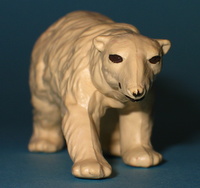
Country/State : UK
Age : 54
Joined : 2016-04-29
Posts : 3576
 |  Subject: Re: Mathison Museum of Natural History Subject: Re: Mathison Museum of Natural History  Sat Dec 23, 2023 5:22 pm Sat Dec 23, 2023 5:22 pm | |
| Interesting that Colorata and Safari used the same mould. |
|   | | Sponsored content
 |  Subject: Re: Mathison Museum of Natural History Subject: Re: Mathison Museum of Natural History  | |
| |
|   | | | | Mathison Museum of Natural History |  |
|
Similar topics |  |
|
| | Permissions in this forum: | You cannot reply to topics in this forum
| |
| |
| |
